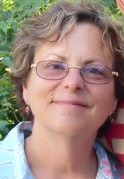This is not an academic question. I found strong evidence, discussed in our previous interview, that in the 2016 Democratic presidential primaries in many states, some of the votes were not counted as cast.
JB: This sure is a lot of work. Why do you do it?
RHP: I am a genuine election integrity advocate. I am not trying to elect one candidate over another. I want free and fair elections. I want the winner to win and the loser to lose.
Having said that, I must consider the political reality. What will matter in California is the delegate count. According to the "Delegate Selection Plan Handout", 90 delegates will be awarded on a statewide, at-large basis; and 326 delegates will be awarded by congressional district, based upon population and voting patterns. Candidates who win 15% of the vote, statewide or in a congressional district, will receive a proportional share of the delegates.
All of the statewide polls taken within the last month show Sanders ahead in California, by margins of 4% to 21%, with every other candidate struggling to win 15% of the vote.
I learned during my investigation of the 2004 election in Ohio* to think like a thief. If I were rigging the primary for Bernie Sanders, I would want to keep his opponents' vote counts below 15%. If I were rigging the primary against Bernie Sanders, I would want to keep his opponents' vote counts above 15%. Simple as that.
JB: What are we looking for?
RHP: If any of the percentages seem suspicious, it will be interesting to see if BMDs were used in those congressional districts. It's easy to figure out. Just save the map of congressional districts on Wikipedia and compare it to the list of counties where all the voters will be forced to use BMDs --
Contra Costa, Del Norte, Glenn, Imperial, Los Angeles, Marin, Mono, Napa, Placer, San Francisco, Santa Clara, Shasta, Siskiyou, Sonoma, Tehama, and Tulare.
JB: What other problems with the BMDs can you foresee?
RHP: In Los Angeles County, they spent upwards of $300 million on these new-fangled machines and they can't figure out how to get more than four names to appear on the screen at the same time. If you click "MORE" you will see more names. If you click "NEXT" the next office will appear on the screen. If you don't know what to do, you may never see your candidate's name at all.
JB: Yikes! That's terrifying! What were they thinking?! And who gets to decide which names will appear on the first screen?
RHP: The California Elections Code, Chapter 2, Â �13111(a) requires that the sequence in which the candidates' names appear on the ballot must rotate from one state assembly district to another. The idea behind "ballot rotation" is to give every candidate an equal chance to have their name appear first on the list. In the 2004 election in Ohio, where the sequence was established by law and known in advance, we found proof that ballot rotation allowed a number of election rigging methods. Where a ballot was counted in the wrong precinct, not the one for which it was intended, the votes were shifted to other candidates. Under California law (Â �13112), ballot rotation is determined by luck of the draw, so the opportunities for fraud are limited, but the chances for error and confusion are real.
(Note: You can view every article as one long page if you sign up as an Advocate Member, or higher).





